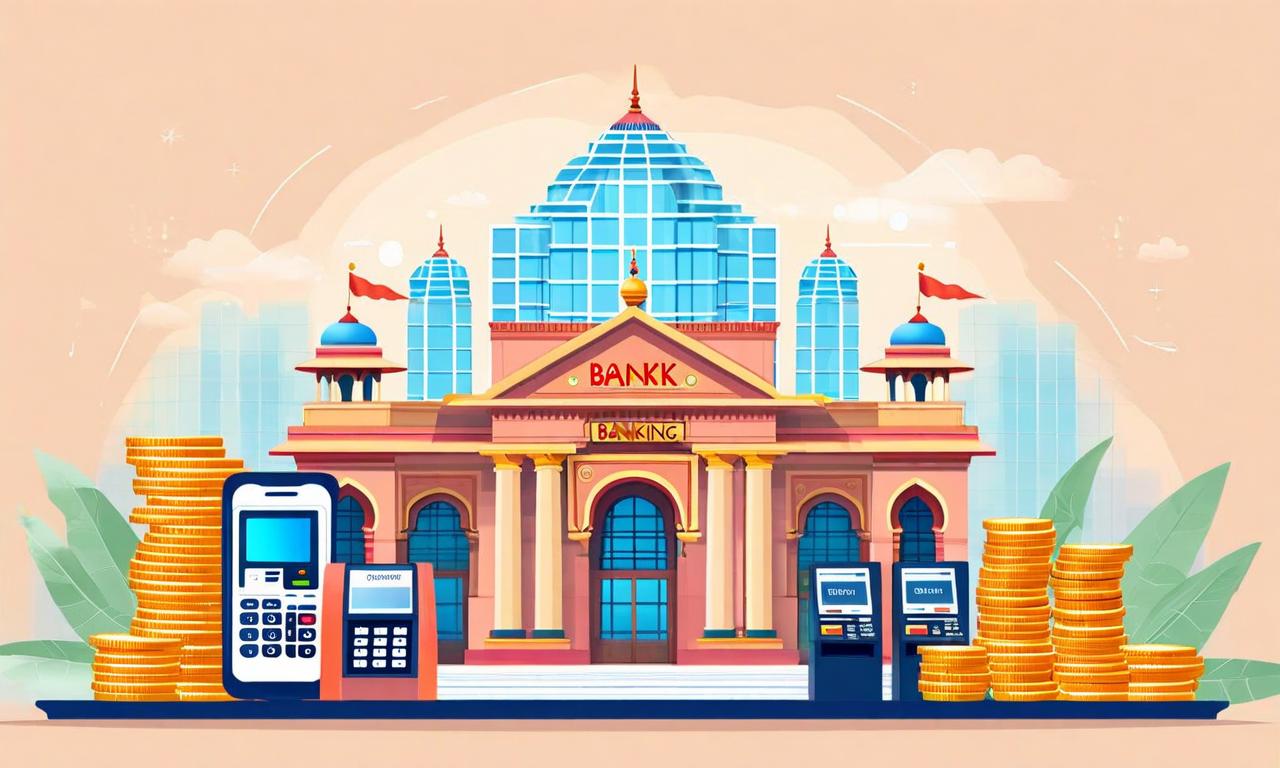Union Bank of India Reports Strong Q2 Performance with 8.14% Credit Growth and Improved Asset Quality
Union Bank of India announced its Q2 results for the period ended September 30, showing a net profit of ₹4,720.00 crores, up from ₹4,604.00 crores year-over-year. The bank achieved 8.14% growth in RAM (Retail, Agriculture, MSME) advances, reaching ₹5.54 lakh crores. Asset quality improved significantly with Gross NPA reducing to 3.29% from 4.38% and Net NPA decreasing to 0.55% from 1.03%. The bank maintained a strong Capital Adequacy Ratio of 17.07% and improved profitability metrics with Return on Assets at 1.16% and Return on Equity at 15.08%. The credit cost decreased to 0.22% from 1.09%, and the bank's deposit base reached ₹12.35 trillion with a CASA ratio of 32.56%.

*this image is generated using AI for illustrative purposes only.
Union Bank of India , one of India's leading public sector banks, has announced its quarterly results for the period ended September 30, showcasing significant improvements in various financial metrics.
Financial Performance
The bank reported a net profit of ₹4,720.00 crores, a slight increase from ₹4,604.00 crores in the same quarter of the previous year. This growth comes despite a compression in Net Interest Margin to 2.67% from 2.90%. The bank's Net Interest Income grew to ₹8,812.00 crores.
Credit Growth and Asset Quality
Union Bank of India achieved an impressive 8.14% year-over-year growth in RAM (Retail, Agriculture, MSME) advances, reaching ₹5.54 lakh crores. The bank's asset quality showed significant improvement:
| Metric | Current | Previous Year |
|---|---|---|
| Gross NPA | 3.29% | 4.38% |
| Net NPA | 0.55% | 1.03% |
The substantial reduction in both Gross and Net NPAs indicates the bank's effective management of non-performing assets.
Capital Adequacy and Profitability
The bank maintained a strong capital position with a Capital Adequacy Ratio of 17.07%, including a CET-1 ratio of 14.37%. Profitability metrics also showed improvement:
- Return on Assets: 1.16%
- Return on Equity: 15.08%
Notably, the credit cost decreased substantially to 0.22% from 1.09% in the same quarter last year, reflecting improved risk management practices.
Deposit Base and CASA Ratio
Union Bank of India's deposit base reached ₹12.35 trillion, with a CASA (Current Account Savings Account) ratio of 32.56%, indicating a healthy mix of low-cost deposits.
Digital Transformation and Inclusive Banking
The bank continued its focus on digital transformation initiatives, aiming to enhance customer experience and operational efficiency. Additionally, Union Bank of India maintained its commitment to inclusive banking through various government schemes, supporting financial inclusion efforts.
Conclusion
Union Bank of India's Q2 results demonstrate strong performance across key areas. The significant credit growth in the RAM sector, improved asset quality, and enhanced profitability metrics position the bank well for sustained growth. The focus on digital transformation and inclusive banking further underscores the bank's commitment to modernization and social responsibility in the banking sector.
Historical Stock Returns for Union Bank of India
| 1 Day | 5 Days | 1 Month | 6 Months | 1 Year | 5 Years |
|---|---|---|---|---|---|
| -0.08% | +0.84% | -0.29% | +10.27% | +27.30% | +433.90% |
















































